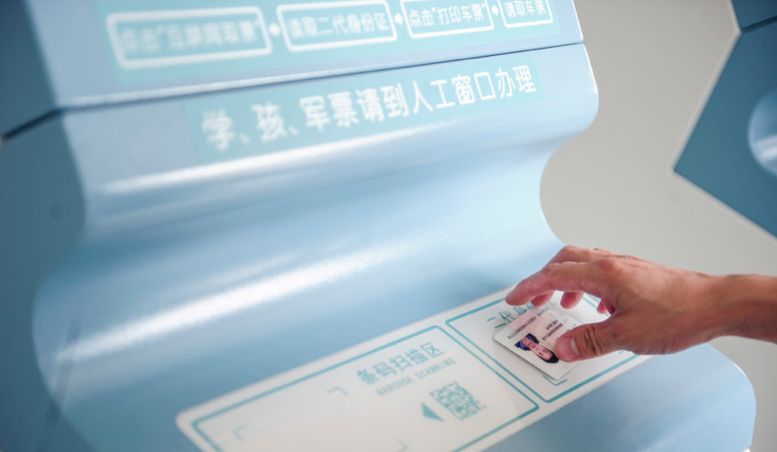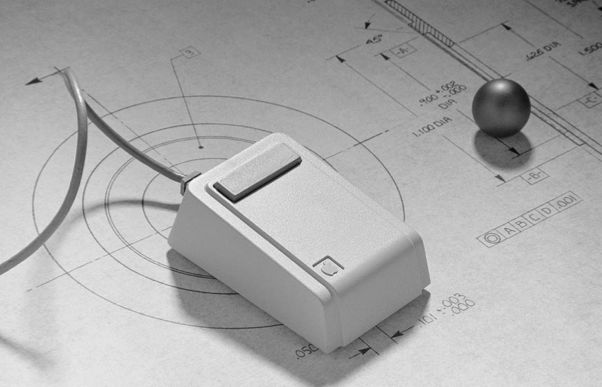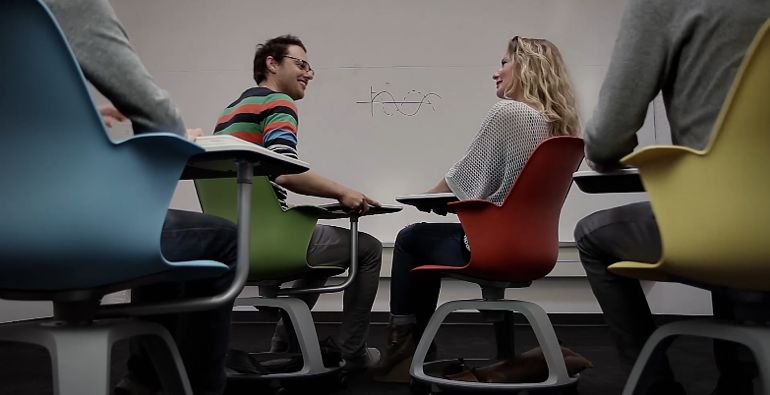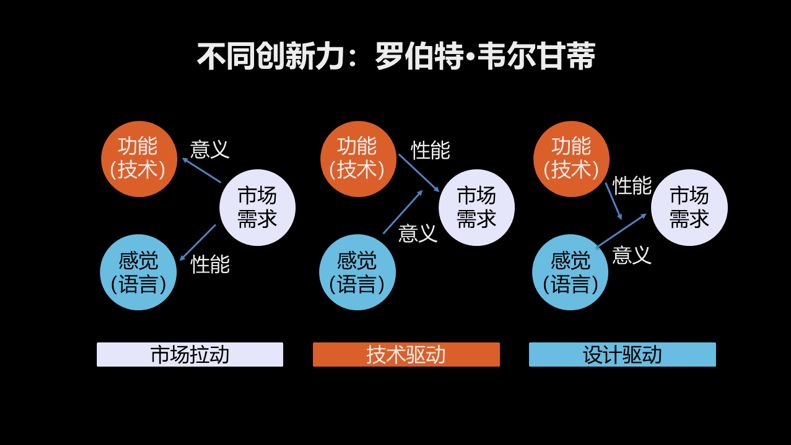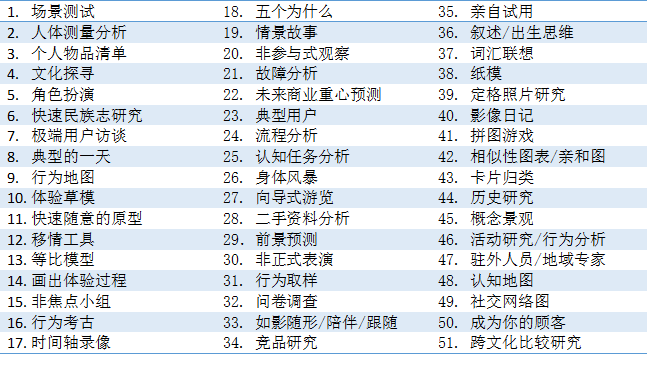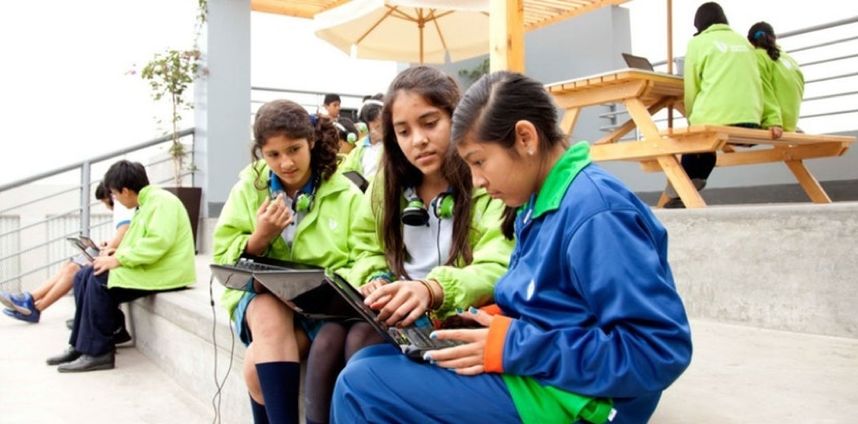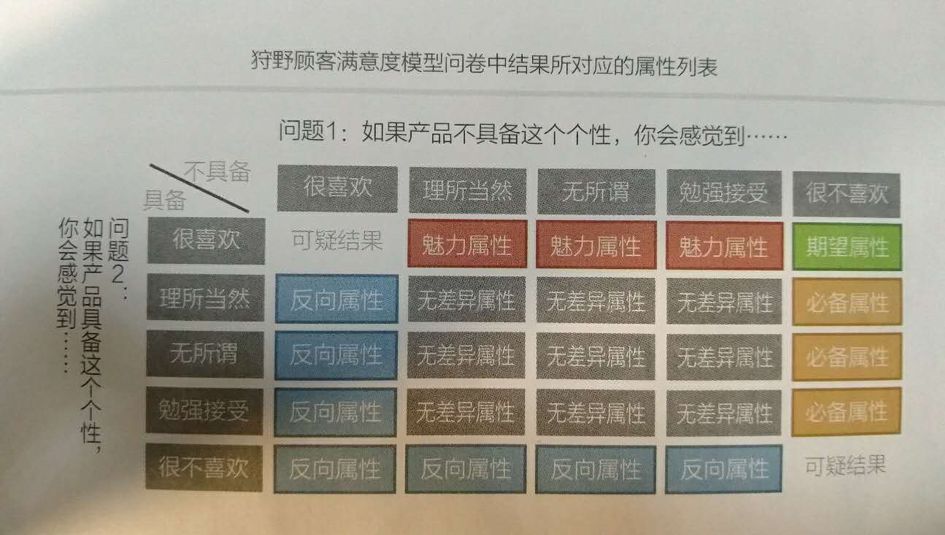Have empathy, open all the way.
Editor’s note: This article is from WeChat public account “Chaotic University” (ID: hundun-university ), the author of the blue sea.
Those hard-to-find designs
In life, have you encountered some unreasonable designs?
The automatic ticket machine at the train station is tilted. If the ID card is put on, it will automatically slide down, so you have to hold it with one hand when you pick up the ticket.
The seat of the plane will always have only one armrest. Every time I take the plane, and my neighbor’s friend “Your left hand touches my right hand.”
Double-helical coil notebooks, when you write to the left, feel awkward.
So, which one is a very human design?
Apple’s first mouse replaced the Xerox’s three-button design with a one-button mouse. This mouse has stable mechanical performance and has become the benchmark for the mouse industry. Until today, most mice have followed this mechanism.
Intercell’s needle-free vaccine removes inserts and only moderately rubs against the skin, reducing body aches.
Singapore Air Seat, to improve the comfort of the journey, no longer have to chat with friends around the neck.
Steelcase ergonomic chair, increase the small area of the package, improve the flexibility of the classroom layout, so that students do not have to “weight-bearing” class.
These designs are all from one company – IDEO
Former US President Barack Obama sent people to three companies to learn how to innovate, Google, Facebook, and the other is IDEO. IDEO is the company that has won the most IDA design awards in history.
“Design thinking is a human-centered approach to innovation, where designers integrate human needs, technology possibilities, and the conditions needed to achieve business success.” IDEO CEO Tim Brown said.
Design thinking depends on people’s abilities:
* Intuitive ability,
* Ability to judge things,
* Build design capabilities for product functionality and emotional meaning.
In business, no one relies entirely on intuition and inspiration to run a business, but over-reliance on data analysis can also lead to biased understanding of user needs, weakened product creativity, and mechanical management of employee management.
Li Kaifu believes in the new book “AI·Future” that “creative or strategic talents, such as artists, economists, and scientists, will not be replaced by artificial intelligence in the future.”
So, in fact, everyone should learn “design thinking.”
Three stages of innovation development
Some traditional designs, considering more of the diversity of functions, the aesthetics of the product and the rationality of the space, the development process is probably like this:
Defining the product category–designing product features–own designOr look for Party B – to design and manufacture.
Many companies are focusing on the downstream sales segment, which is to increase sales and brand awareness through channel promotion.
However, as the homogenization of product types, pricing, and channel promotion intensifies, consumers are increasingly not paying for “impulsiveness” – Apple stores are no longer in the queue, but are more inclined to be functional. With customized products or services, this makes the traditional “remarketing” model unsustainable.
Therefore, product innovation has also evolved from a market-driven to a design-driven.
Robert Verganti has proposed three stages of innovation development.
The first phase: Market pull phase, which reflects the market trend by analyzing market demand to meet consumer demand.
Second phase: Technology-driven phase, technological breakthroughs have impacted the existing industry and brought competitive advantage to the enterprise.
The third stage: Design-driven stage, the core lies in the company’s feeling of breakthrough products, which can win the hearts of the people and make technology empower the products.
So, how does the design driver work?
51 small cards, creative tools for the system
Peter F. Drucker, the father of modern management, once said, “The designer’s job is to turn needs into needs.”
IDEO also promotes “people-oriented”, based on divergent thinking, using modeling and trial and error, the ultimate goal is to design products that meet consumer and market needs.
IDEO “People-oriented” design methodology is mainly reflected in its original – 51 card method.
IDEO’s “51 Card Method” looks like a summary, summed up, mainly applied in four aspects:
1. Analysis: Interpret/analyze the information collected to gain business insight.
2. Observation: Observe the behavior of others and understand the reasons behind the behavior.
3. Ask: Engage different types of consumers and employees in different fields to guide their true thinking about the product.
4. Try: Make a simple model and evaluate the design methodology for design.
For example, the Innova School designed by IDEO for Peru, this case applies to three cards – typical users, situational stories and foreign personnel/regional experts.
In 2012, Peru ranked at the bottom of the PISA Education Assessment survey in 65 countries.
However, the locals are clearly aware of this problem. In 2011, Peruvian billionaire Carlos Rodriguez-Pastor teamed up with IDEO to establish Innova with the goal of “a high-quality school affordable to the middle class”.
The integrated approach to Innova’s educational system design has become the most ambitious private education program in Latin America.
In the early stage of project preparation, IDEO spent six months in Peru to conduct field research. The core team consisted of 5 people, including 1 commercial designer, 1 system designer, 1 communication designer, 1 architect and 1 researcher.
The five people surveyed Peruvian students, parents, teachers, governments, and investors to understand two situations.
First, the traditional Peruvian public education uses the cramming teaching of “teacher lectures, students take notes”, which can be derived from the ranking of Peru’s education. This model does not mean that students “learned knowledge”.
Second, from 2002 to 2012, the Peruvian economy doubled, and 20% of Peruvians rose to middle-income classes, which had a huge demand for education. However, private schools with leading teaching quality in Peru need to spend 30%-50% of the income of the middle class, which makes many people discouraged.
Based on these research, IDEO is pricing Innova for $130 per student per month, which is equivalent to one-third of Peru’s best private school fees.
After the pricing is determined, how to solve the shortcomings of the traditional education model through system design has become a top priority. This requires starting from the inside (teacher quality, curriculum design) and external (teaching environment design).
First of all, in order to solve the problem of lack of quality teachers in Peru, Innova designed an online resource center for teachers, which contains 18,000 customized courses designed with the latest teaching methods, which can help teachers improve their teaching skills and promote them. Online interaction between teachers.
Second, different from traditional cramming teaching, adopting “Mixed learning mode of “self-learning” and “group learning.” Students’ daily learning is divided into two parts. In the morning, there are 30 small class teachings. After the teacher teaches the basic content, they will conduct innovative project exercises through teamwork and show them at the end of the school year. The solution is that the teacher is only involved as a facilitator; in the afternoon, he is independent, using online learning platforms such as Khan Academy and Time to Know. Teachers and parents can learn about the student’s learning status through online platform data feedback. .
As for the teaching building, maybe your impression is this:
IDEO has designed a flexible teaching environment for Innova, including community spaces, multimedia studios, rooftop learning spaces, amphitheatre and coffee shops.
Interestingly, Innova’s classrooms are often outdoors, so students don’t feel depressed because of the rigid classrooms, and they can team up for group discussions.
The flexible teaching environment is immediately effective. In 2013, 61% of Innova’s second-year students passed the national math test, and the national average pass rate was 17%.
When you see this, maybe you have a question, “IDEO is a designer, the card is handy, as a non-design industry, know what these cards are for me?”
In fact, through the story of Peru, it can be seen that IDO’s way of thinking and operation methods can be very broad. In fact, it also cooperates with Microsoft, Pepsi, Procter & Gamble, etc. Tim Brown The high-level executives of these multinational companies have promoted the application of “design thinking” in enterprises.
In the final analysis, from the PC era to the mobile Internet, from the fall of Nokia to the popularity of Apple, from the portal to the rise of the headline, you can find that – every CEO is using creative tools, the use of good, it has The ability to overtake a corner.
Workplace scenarios – brainstorming should be like this
In the work, we always have a variety of meetings: morning meetings, project launches, resumption meetings, seminars, etc. Some meetings, the name of the brainstorm, and finally evolved into a goalless contest or a critical assembly.
Whenever a person puts forward a point of view, there will always be people who refute “this idea does not meet the needs of the user!”, “There were people who used this idea hundreds of years ago!”, “This does not conform to the XX law” and so on. When voting decides which plan to use, many people will tend to cater to the leadership ideas, and finally lead to brainstorming “small winds and rains”, the choice of the program is often the most secure rather than the most creative.
The 15th card method of IDEO’s 51 card method – the non-focus group is based on the “suspension of comments, whimsical, not to run questions” as the brainstorming principle.
It is divided into seven steps:
1. Suspend judgment: Do not refute any ideas of others
2. Whimsical: Embracing the concept of the most detached framework
3. Borrowing questions: Don’t say “but”, say “yes”
4. Don’t break the question: Focus on the discussion, without deviating from the topic
5. One person at a time: Don’t interrupt other people’s conversations, don’t refute them, don’t scorn them
6. Illustrated: Write a sketch or draw a composition on a sticky note with a colored pencil, post it on a poster, and vote on it
7. More and better: In the 60 minutes, let the idea break 100%
IDEO has designed a children’s product for Nike, invited a group of 8-10 year old children, separated by men and women, and spent about an hour of brainstorming.
It was found that there were more than 200 girls and only 50 boys. Boys are always eager to express their own ideas, and without listening to other people’s ideas, they can’t “play through the subject”, while girls are the opposite.
So, in a brainstorming session, you must listen before you can diverge.
So, after having many ideas, how to choose and evaluate which ideas are most effective?
Resolve user pain points, you need this model
IDEO CEO Tim Brown mentioned in “Design Changes” that the product must be designed with the following in mind:
1. Does it meet the needs of the target population?
2. Does it create meaning beyond value?
3. Does it motivate a new behavior that will establish a permanent connection with it?
4. Does it create a key point to motivate demand?
Here, we use a case to demonstrate how IDEO meets the above four key points.
Speaking of physiotherapy, maybe you will see such a picture in your mind:
Traditional physiotherapy devices are cumbersome, inconvenient to carry, and many instruments can only relieve one type of pain. When used, it stimulates blood circulation; when not in use, the pain remains.
IDEO has developed a wearable physiotherapy tool for NeuroMetrix to relieve pain in a variety of areas including neuralgia, arthritis, back, legs and feet.
First of all, the designer can get an important clue by playing the user and personally experiencing the experience of patients with chronic diseases.
For example, where are the traditional physiotherapy devices inconvenient to operate? What accessories do we wear in our lives? Which thing is the most confusing for patients?
This potential need exists, but patients often cannot express it. As a result, the appearance of this product is like “knee-pad”, users can wear it anytime, anywhere, without worrying about aesthetic problems. No matter where the pain is, the “knee-pad” will pulse up to the central nervous system of the brain, which can relieve any painful part of the body.
At the same time, by working with AtomicObject, users can download the app and enter personal information such as age and height. The system will automatically record the location and time of their pain, walking style, and even mood, etc. And test the treatment effect.
The Japanese professor Kano Kisho proposed the “Kano Customer Satisfaction Model” and mentioned the trilogy of user satisfaction design.
First, design the questionnaire.
Second, analyze the results.
Third, evaluate the effect.
The following are the five most important dimensions when evaluating performance.
● Charm attribute: Users are not interested in this feature. If not provided, user satisfaction will not decrease; if provided, customer satisfaction will be greatly improved. ● Expected Attributes: When this attribute is provided, customer satisfaction will increase; when not provided, customer satisfaction will decrease. ● Mandatory attributes: Customer satisfaction will not increase when this attribute is provided; customer satisfaction will be significantly reduced when not provided. ● No difference attribute: Customer satisfaction will not change whether provided or not. ● Reverse attribute: The user does not have this requirement at all. After the offer, the satisfaction will decrease. Products must have mandatory and expected attributes, while reducing indifferent and reverse attributes.
If you reach the glamour attribute, you can exceed consumer expectations and increase user satisfaction.
We use this model to analyze the above case to see if it meets consumer expectations.
First, essential attributes is pain relief, which is the motivation for users to purchase it, and if not, users won’t buy it.
Secondly, Big Data Tracking Health belongs to Expected Attributes. After satisfying the attribute of relieving pain, if the product can evaluate the user’s health status, you will feel the product. Humanistic care, increasing the frequency of use of products, increasing the number of potential users and product demand. This feature also enables the company to establish permanent contact with the user, making it easy for NeuroMetrix to understand the user’s pain points and to iterate over the product.
In addition, the Design of wearable concise has reached Charm attributes, breaking the user age limit. Young people have high requirements for product aesthetics. Generally, physiotherapy products are cumbersome to design, and users are not convenient to wear them. The new design is light and compact. No matter whether it is work or party, users need to wear knee pads as if they are exercising.To feel the pain, you can treat it at any time.
NeuroMetrix went on sale in January 2018, and its performance was down. The stock price fell by about a quarter. But as people’s acceptance of this physiotherapy instrument increased, the stock price doubled. This is the power of technology.
The original intention of this power comes from IDEO’s insight into consumers and empathy for consumers.
Remember the different stages of innovation development mentioned at the beginning of this article? In the third stage, the driving force for innovation comes from the company’s imagination of breakthrough products, which can win the hearts of the people.
Conclusion
In this era, technology is changing, the market is changing, business models are changing, and it is too difficult for products to continue to be recognized by users. So we must learn the methodology behind those successful products.
If a product marketing is done well, it will attract users to buy, but after the impulse, the frequency of use may be very low;
If a product does a good job, it will attract users to buy and recommend friends to buy, but if a single company makes the product function better, the user may lose;
If a product feels good, it means that the designer will design the product like “designing his own life”, simplifying it, returning to the original, giving the product practicality and meaning, then it will attract users to continue Sex purchases ultimately build loyal users. (End)
Eggs
How do you find a career that suits you in the workplace?
Below, let’s continue to use the “Kano Customer Satisfaction Model” mentioned above, and make minor adjustments to evaluate the current work.
If your work meets the following, you are basically suitable for your current job:
1. In my work, I realized my self-worth and maximized my personal advantage (charm attribute)
2.The company uses the business level as a criterion for evaluating whether employees are promoted (expected attributes)
3. I am very satisfied with the current state of work, the skills needed for the job are handy (expected attributes)
4. Even with a little challenge, I will overcome the difficulty of getting the job done (expected attributes)
>
5. I feel that my salary is basically at a reasonable level (essential attributes)
6. My work occasionally works overtime, but it doesn’t affect my personal life (essential attributes)
7. Unexpected things at work, complaining about the past (reverse attributes)
References:
1. Tim Brown “IDEO, Design Changes Everything”
2. Chai Chunlei, Qiu Yiwu, Yu Liying, “Business Innovation Design”
3.Thinking (2015): This Peruvian school said: Do not move the shift students, the wall will be fine!
4. Xiao Ke Technology (2019): NeuroMetrix reflects on how to increase the feasibility of AI applications in the medical field
